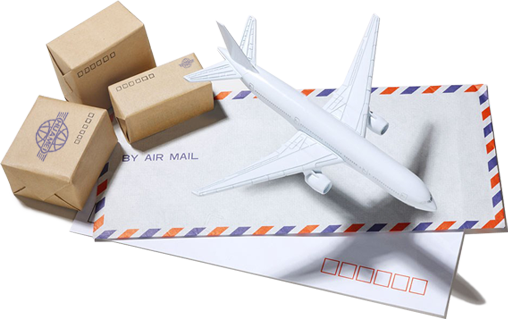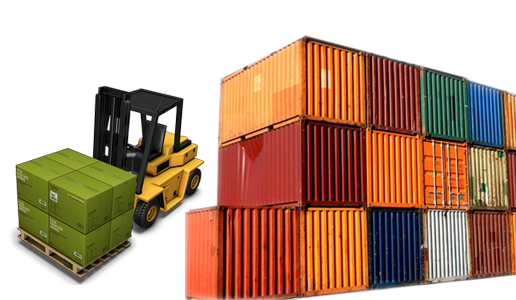Ocean Freight Export Services (FCL/LCL) from Shenzhen & Guangzhou, China to the USA, Europe, and Australia – DDP Customs Clearance with Door-to-Door Delivery.
Preface: We specialize in ocean freight export services (FCL/LCL) from Shenzhen and Guangzhou to the United States, Europe, and Australia. Our transparent pricing includes all taxes and shipping costs, with guaranteed full clearance services (export & import) for worry-free logistics. Leveraging multi-modal transport solutions and express direct shipping routes, we ensure rapid door-to-door delivery. Whether for bulk shipments or smaller consignments, our seamless end-to-end logistics solutions streamline global supply chains, empowering your business with efficient and reliable international cargo management.
I. Shuttle Ocean Freight Rates & Transit Times to the U.S., Europe, and Australia
The pricing and delivery timelines for shuttle ocean freight services to the U.S., Europe, or Australia vary based on multiple factors. Generally, we tailor shipping solutions to your specific needs and budget, with transit times typically ranging from 3 to 6 weeks, subject to operational variables. For a precise quote or further inquiries, please contact our logistics team with your cargo details. Below are key factors influencing costs and transit times:
Ocean Freight Rates to the U.S., Europe, and Australia
We provide transparent and competitive pricing strategies tailored to align with diverse budgets. Our cost structure comprehensively covers the following key components:
FCL/LCL Charges
FCL (Full Container Load):
Fixed rates for exclusive container use, ideal for large-volume shipments (e.g., 20'GP, 40'HC).
LCL (Less than Container Load):
Flexible pricing based on volume (CBM) or weight (ton), optimized for smaller cargo sharing space.
Tax-Inclusive Services (DDP)
All-inclusive Duty Coverage:
Pre-calculated export/import tariffs, VAT, and compliance fees (e.g., U.S. HTS codes, EU EORI requirements).
Zero Hidden Costs:
Eliminates unexpected charges post-shipment.
Dual Customs Clearance
Export Clearance (China):
Documentation prep (commercial invoice, packing list, COO) and China Customs coordination.
Import Clearance (Destination):
Local agency partnerships for seamless clearance (e.g., U.S. FDA, EU T1 transit procedures).
Door-to-Door Logistics
End-to-End Coverage:
Includes pickup, port handling, ocean freight, final-mile delivery, and real-time tracking.
Cost Transparency:
All ancillary fees (fuel surcharges, remote area fees) disclosed upfront.
Ocean Freight Transit Times for Machinery to the U.S., Europe & Australia
Timeliness is one of our key service focuses, ensuring your cargo reaches its destination in the shortest possible time:
Fast boat shipping: Using fast boat shipping, the average transit time from China to the US West Coast is about 15-25 days, Europe averages 25-35 days, and Australia averages 30-40 days.
Pre-scheduling: Estimating shipment times in advance to ensure timely loading onto the ship.
Quick customs clearance: Dual-clearance services guarantee swift customs processing at the destination port, avoiding delays.
Requirements for packaging of sokuji marine export:
As a large, precise, and heavy-duty mechanical device, the sea export packaging of shuttle machines has relatively high requirements to ensure they are not damaged during transportation. Here are the main requirements for the sea export packaging of shuttle machines:
Selection of packaging materials:
Wooden packaging: Typically uses sturdy wooden crates or boxes to provide adequate support and protection. The interior of the wooden box should be lined with moisture-proof materials such as plastic film or moisture-proof paper to prevent dampness and mold.
Shockproof materials: Internal gaps are filled with foam plastic, bubble wrap, and shock-absorbing cotton to absorb impact and vibration during transportation.
Waterproof materials: The exterior is covered with waterproof canvas or plastic film to prevent seawater and rain from entering.
Packaging structure
The winch should be secured with wooden battens or steel straps inside the wooden crate to prevent it from shifting during transportation.
Reinforced framework: The wooden box should have reinforcing frames around its edges to enhance overall strength and prevent deformation or rupture of the box.
Ventilation holes: If ventilation is needed for the loom, appropriate ventilation holes should be set on the box body, covered with dust-proof nets.
Signs:
Warning Sings: Affix warning labels such as 'Fragile' and 'Handle with Care' at conspicuous locations on the exterior of the packaging.
Labels: This includes information such as the item name, weight, dimensions, destination, as well as a barcode or QR code for scanning and identification.
Marking: According to international practice, the export marks should be indicated on the packaging, including the consignee, shipper, port of destination, and other relevant information.
Other Requirements:
Rust prevention: The metal parts of the loom should undergo rust prevention treatment, such as applying rust-proof oil or wrapping them with rust-proof paper.
Inspection and certification: After packaging is completed, it should undergo inspection to ensure compliance with international shipping packaging standards such as ISPM 15, and obtain relevant certification.
Document preparation: Provide complete packing lists, packing slips, transportation insurance documents, etc., to ensure smooth customs clearance.
The packaging requirements for exporting shoveling machines by sea are strict to ensure they remain undamaged during long-distance transportation. By selecting appropriate packing materials, designing a reasonable packaging structure, correctly labeling, and properly handling rust prevention, the shoveling machines can be effectively protected to ensure safe arrival at their destination. Choosing professional packaging and logistics service providers can further reduce risks and improve transportation efficiency.
Considerations for exporting by sea with a sokuji (lighter):
Due to their high precision and valuable cost, sokuji require special attention to safety and protective measures during marine export. Here are some key considerations to help ensure your goods arrive safely at their destination:
Compliance Inspection:
Importing Country's regulations: Ensure that the equipment meets the import standards and regulations of the destination countries (the United States, Europe, Australia) to avoid being returned or fined for non-compliance.
Special Approval: Some equipment may require export licenses or other government approval documents, which should be verified and obtained before shipment.
Packaging and Label:
Professional Packaging:
Shock proof measures: Wrap the equipment with high-density foam or bubble wrap to minimize the impact of transportation vibrations on it.
Moisture proof and water proof: Ensure that the packaging is waterproof and moisture-resistant, especially around the electrical components of the equipment.
Fixed: The equipment is secured inside the box with padding to prevent movement and damage during transportation.
Clear Label:
Recipient information: Ensure that the package is clearly labeled with the recipient's details and destination address.
Warning sign: If the equipment is hazardous or requires special handling, it must be clearly marked.
Document preparation
Complete Documents: Prepare and submit all necessary export and import clearance documents, including commercial invoices, packing lists, bills of lading, certificates of origin, and other relevant paperwork.
Compliance certificate: If necessary, prepare compliance certificates such as inspection and quarantine certificates and export licenses.
Logistics and Transportation:
Choose reliable logistics: Select a logistics company with a good track record and expertise, especially one with extensive experience handling high-value and high-precision equipment.
Insurance Coverage:
Purchase appropriate marine cargo transportation insurance for the device to ensure compensation in the event of any loss or damage during transit.
Cargo Tracking: Using modern logistics technology (such as GPS tracking systems) to monitor the location of goods in real-time, ensuring the visualization of transportation status.
Emergency Response Plan:
Communication Mechanism: Establish an efficient communication mechanism with logistics companies to ensure that information and solutions can be obtained quickly in the event of unexpected situations.
Contingency Plan: Develop emergency backup plans in response to potential delays or issues, such as selecting alternative routes or postponing sales arrangements.
Customs Cooperation:
Communicate in advance: Reach out to the customs of the destination country ahead of time to understand possible inspections and clearance requirements, reducing potential delays.
Comply with declarations: Ensure that all declaration information is accurate and error-free to avoid issues caused by incorrect declarations.
By adhering to the above precautions, you can significantly reduce the risks associated with cranes during the shipping export process, ensuring the safety of your equipment and its timely arrival in the hands of international customers. Our professional team will provide guidance and support at every step to ensure a smooth and efficient logistics process for you.
Export Customs Documents and Processes for Sewing machine:
When exporting shuttle machines from Shenzhen and Guangzhou by sea to the United States, Europe, or Australia, preparing and processing customs clearance documents is a critical step to ensure a smooth logistics process and the timely arrival of goods. Here is a detailed guide to customs clearance documents and procedures:
Customs Clearance Documents Preparation:
Before exporting shuttle machine, you need to prepare the following key documents and submit them to customs.
Commercial Invoice:
Content: Include commodity description, quantity, unit price, country of origin, etc.
Usage: For customs value estimation and verifying cargo's value.
Packing List:
Content: Provide the detailed packaging details of cargo including quantity, weight, volume of each packaging, etc.
Usage: Help customs verify that the goods match the information on customs declaration.
Bill of Lading:
Content: A document confirming the loading of goods onto a vessel, including the carrier, shipper, consignee, description of the goods, port of loading, port of discharge, and other relevant information.
Purpose: as a certificate of pickup and proof of ownership.
Export Declaration:
Content: Include detailed description of cargo, quantity, value, departure, destination, etc.
Usage: When declaring goods to the customs, other relevant documents will be attached if necessary.
Certificate of Inspection:
Content: issued by the inspection and quarantine department, it proves that the goods meet the relevant quality, safety and hygiene standards.
The purpose of this document is to demonstrate the compliance of the goods to the importing country.
Certificate of Origin:
Content: The goods are originally from a specific country, which may affect the import tariff and quota.
Usage: Prove the origin of the goods and may be used for tariff reductions or preferential arrangements.
Export License (If necessary)
Content: Issued by the relevant competent authority, authorizing the export of specific goods.
Purpose: Applicable to goods requiring special permission.
Insurance Policy:
Content: Proof of purchase of marine cargo insurance.
Purpose: Cover potential losses of goods during transportation.
Customs Clearance Processes:
Document Preparation: Complete all necessary customs clearance documents before the goods are loaded onto the vessel.
Customs Declaration: Submit the export goods declaration and other related documents to the Chinese Customs for cargo declaration.
Customs Inspection: The Customs may need to inspect the goods to ensure that they match the description on the declaration form.
Payment of Taxes: Pay the statutory export taxes, if applicable.
Issuance of Bill of Lading: After the goods have completed customs clearance procedures, the shipping company issues the original bill of lading.
Cargo Loading: The goods are loaded onto the vessel, marking the official commencement of the journey.
Customs Clearance at Destination Port: Upon arrival at the destination port, the consignee's customs agent will use the relevant documents to clear the goods for import, including customs declarations, inspections, and tax payments.
By being well-prepared and following the correct customs clearance procedures, you can ensure that your shipment smoothly passes through customs inspections and is delivered to customers in the United States, Europe, or Australia on time without any issues. Our one-stop service will assist you in handling all complex documents and processes, ensuring a worry-free logistics experience for you.
Purchase of Marine Insurance for Export on Spinning Frame:
As a high-value precision equipment, shuttles involve a variety of risks during sea transportation and export, including but not limited to cargo losses, damages, delays, etc. To protect your interests, it is very necessary to purchase appropriate cargo transportation insurance. Here are some key steps and precautions for purchasing shuttle shipping export insurance:
Insurance Policy:
Basic Coverage: Usually only covers the losses caused by major accidents such as ship sinking, fire, etc.
Provide Cargo's information: Usually only covers the losses caused by major accidents such as ship sinking, fire, etc.
Determine the insured amount: usually the value of the goods plus transportation costs and expected profits.
Sign the insurance contract: Confirm the insurance terms and exclusions, sign the insurance contract.
Pay the premium: Pay the corresponding premium according to the requirements of the insurance company.
Precautions:
Cargo valuation: Ensure that the value of the goods is accurate to avoid difficulties in claims processing due to overvaluation or undervaluation.
Insurance terms: Carefully read the insurance contract to understand the coverage and exclusions.
Transportation details: Make sure transportation details (such as route, loading/unloading methods, etc.) comply with insurance requirements.
Record keeping: Retain all documents and records related to the goods, insurance, and transportation for claims processing when necessary."
Claims Process:
Claim: Immediately notify the insurance company and provide a preliminary loss report after the goods are damaged or lost.
Inspection and Assessment: The insurance company may send someone to inspect on-site or request relevant evidence.
Submit Claim Documents: Provide documents including the insurance policy, bill of lading, invoice, packing list, loss report, etc.
Claim Review: The insurance company reviews the claim request and confirms whether it meets the conditions for compensation.
Compensation: After approval, the insurance company will make compensation.
Purchasing appropriate marine insurance not only safeguards your cargo but is also an important part of compliance. Consult with a senior insurance advisor or contact the insurance company directly to ensure the safe transportation of your goods.
Choose our weaving machine full container and LCL ocean freight export services for a comprehensive door-to-door logistics experience! By combining fast ships with direct routes, we ensure your goods arrive in the shortest time possible while bypassing cumbersome customs clearance procedures, allowing you to focus on business development with peace of mind. Our professional team is always ready to provide consultation and service to ensure seamless international transportation. Contact us now to get the most competitive quotes and join hands to explore a broader international market.











